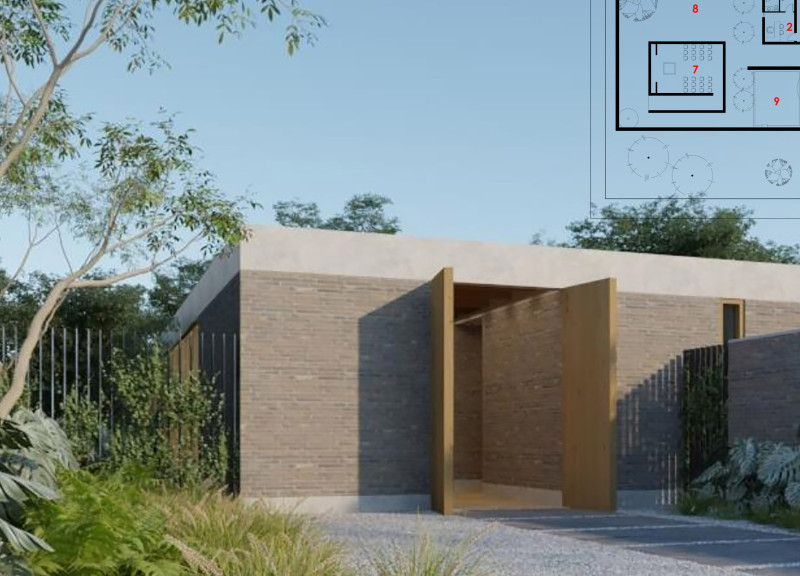5 key facts about this project
The design located in the West End area of Dallas, Texas, showcases a thoughtful blend of nature and urban planning within a healthcare setting. The hospice aims to support psychological healing through a series of gardens that are both public and private. This approach not only addresses the individual needs of visitors but also adds vital green spaces to the urban landscape. Accessibility is well-considered, making use of existing light rail, bus routes, and car access that connect to the bustling downtown area.
Garden Integration
At the heart of the design are communal spaces, which include a library, a gathering room, a kitchen and dining area, and a chapel. These areas encourage interaction among patients, families, and staff, helping to create a warm and supportive environment. The gardens serve as therapeutic landscapes where individuals can find solitude, reflect, and engage with nature, thus enhancing the overall experience for those using the hospice.
Water Features
Water elements, like an exterior pond and a small fountain inside the chapel, feature prominently in the design. These provide sensory experiences that improve the atmosphere. The calming sound of water contributes to a peaceful environment, offering a space for reflection while promoting local biodiversity. The placement of these elements is intentional, encouraging visitors to immerse themselves in their surroundings.
Materiality and Context
The project incorporates brick, concrete, and wood as chosen materials. These options are in line with the qualities found in the industrial buildings of the area. The materials create a connection to the local history, linking the hospice to its context. A lightwell in the chapel allows natural light to brighten the space, contributing to a sense of calm and well-being.
Visual and Sensory Elements
Beyond the structure itself, the design emphasizes light and gentle sounds of water, complemented by the existing trees and plants. This combination creates a nurturing environment that supports the healing process. The thoughtfully designed spaces prioritize a connection between the built environment and nature, highlighting the importance of this relationship in modern healthcare design.



















































